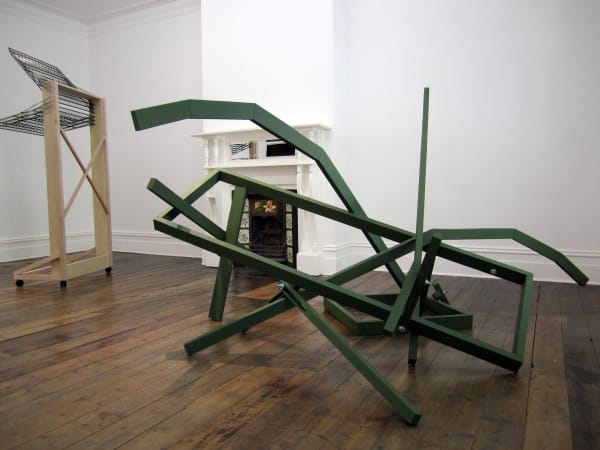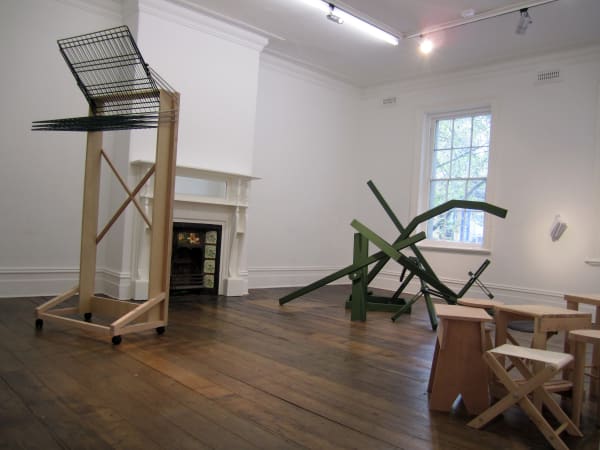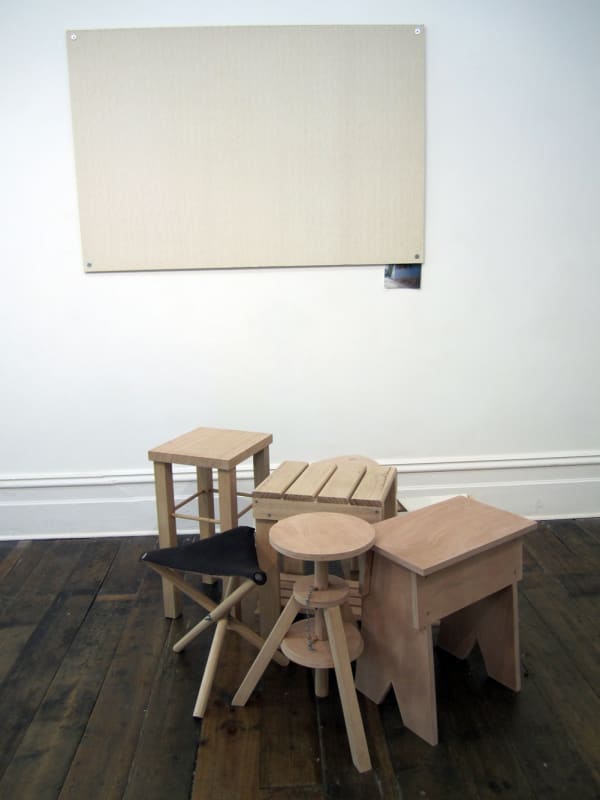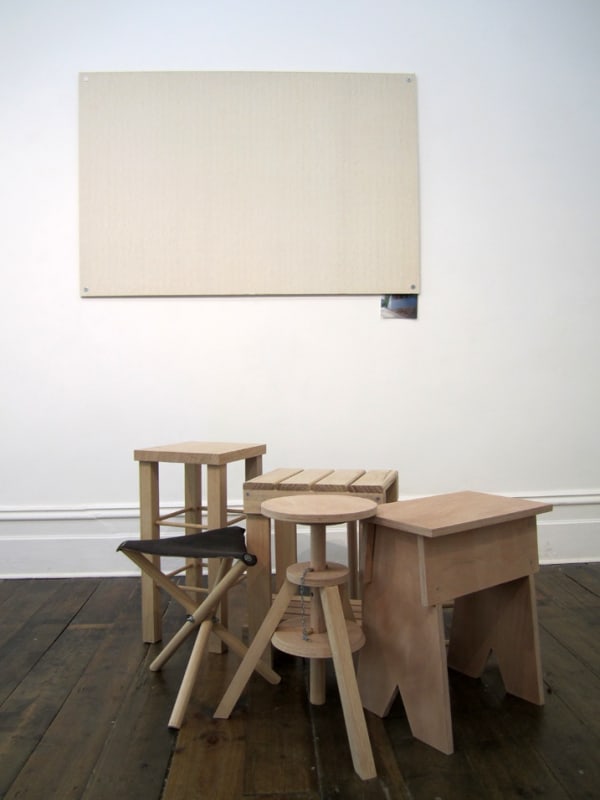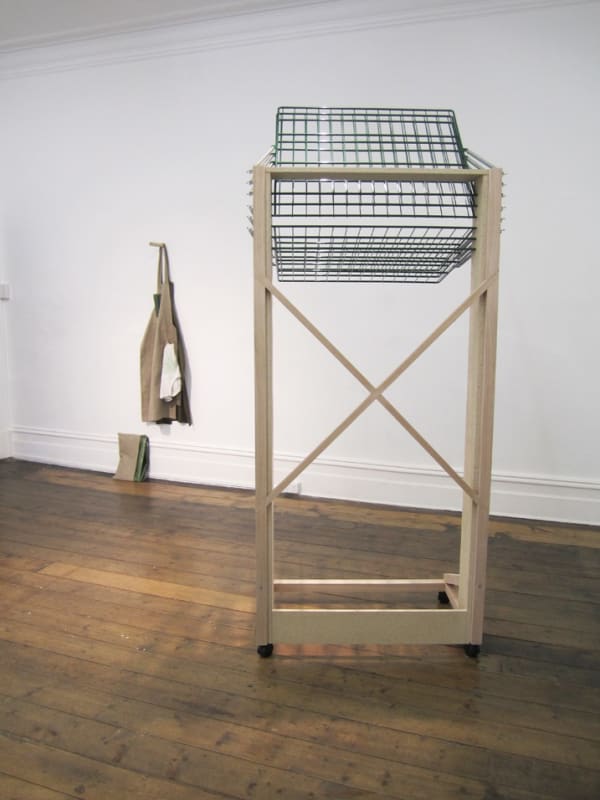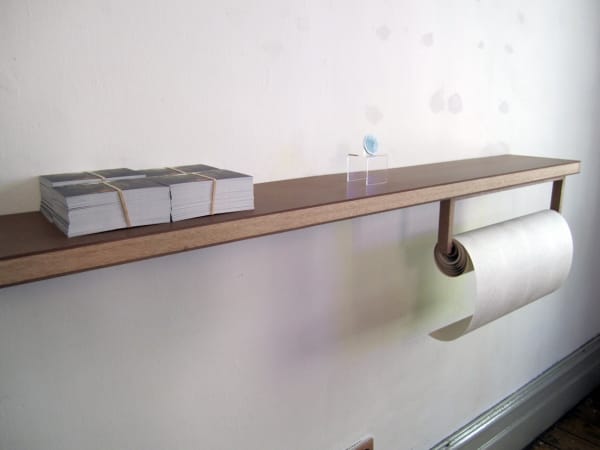Spiros Panigirakis: Ferntree Gully
Spiros Panigirakis: Ferntree Gully was an exhibition of a major new body of work by Melbourne based Panigirakis, who is interested in how presentational devices and frameworks influence meaning. In the case of Ferntree Gully, the work derives from the actual site of its presentation – Sarah Scout Presents being the former home and studio of the pre-eminent colonial landscape painter Eugene von Guérard, from 1857-58.
In its day, Ferntree Gully at Dandenong Ranges (1857) was the most celebrated of Australian paintings and von Guérard earned his international reputation by representing the exotic quality of the Australian landscape within the tradition of European ‘arcadian’ painting. The work, however, described as a truthful ‘study from nature herself’ was in fact painted in his studio, more than forty kilometres from its locale.
Panigirakis has long engaged the role of the studio as a space of production in which results of artistic ‘fieldwork’ are synthesised and transformed. In Ferntree Gully, he provides a contemporary perspective on the representation of the landscape and how this might manifest in culture outside the domain of traditional gallery contexts (ie, through mass production).
The exhibition comprised a series of sculptural pieces, their designs loosely derived from von Guérard’s studio furntiture, as well as postcards, wallpaper and other commemorative elements – reflecting Panigirakis’ interest in the overlapping tendencies of art, design, value and consumerism.
SPIROS PANIGIRAKIS: FERNTREE GULLY
I'm sitting in a bar in Northcote and Spiros[1] is shifting nervously at the mention of a strange occurrence, he's worried about the possibility of psychic phenomena. If he were to believe in the supernatural then the world may turn out to be something other than social (dis)order, he may discover a greater underlying meaning or purpose. Where some take comfort in this thought, Spiros is uneasy. For him the world is made up of relations – complicated, contingent, often difficult and ultimately unresolvable. Spiros' work is unrelenting in its adherence to this schema, often to the point of being stubbornly obstructive – a drawn blind, an absent painting, a mass of obscured furniture, and here, instead of a sublime moment we are offered a quorum of chairs. Useful, no doubt, if you need to seat 7 and come to some consensus, but on a Saturday when you're just looking for light relief...why do things have to be so complicated?
In a scene from David Attenborough's 1998 documentary The Life of Birds a lyrebird imitates the sound of a logger's chain-saw.[2]Attenborough narrates the scene in classic whispered tones while the lyrebird speaks the evidence of our entanglement. There is something deeply disturbing about this scene; a sickness has crept in. The lyrebird doesn't care; doesn't draw a distinction between culture and nature. It doesn't understand that boundaries have been transgressed.
Contamination is inevitable. Things do not simply stand in relation to one another, they infect each other with their own condition – clear distinctions cannot be maintained. The lyrebird becomes the chain-saw, the studio becomes the artwork, the easel becomes...complicated.
When Eugene von Guerard first exhibited his most famous of paintings, Ferntree Gully in the Dandenong Ranges, in 1857 Victoria was in the grip of 'fern fever'. Not some precursor to avian or swine flu, but a deep desire for that 'most picturesque' and 'romantic' of plants.[3] Fern motifs adorned everything from ball gowns to butchers shops, by the end of the nineteenth century potted ferns could be found in all strata of society, from the working-class houses of Collingwood to the great Victorian mansions.
Fifty years on, my grandmother was keeping the tradition alive. The lush sheltered gullies of the Dandenong Ranges were a far cry from central Victoria and the chicken farm where she spent most of her adult life; she took matters into her own capable hands. A large fernery was established at the rear of the house – stag horns, tree ferns, maidenhairs – a disorder of fronds. She was blind in the end, yet she still kept up the watering, dragging around those half-inch hoses, spraying everything. Outside it was 42 degrees, white light, bleached concrete, and the smell of geraniums; inside, dark and cavernous, another world – magical. Despite Spiros’ aversion to the supernatural, 'magic' is a word I have heard him use. 'Magic happens', Spiros giggles, it doesn't actually happen. Magic figures its possibilities, sketching them into the world, suggesting alternatives, gesturing to a space beyond the dust, the heat, and the chickens.
'Ferns!' – the easel explodes with limp-wristed enthusiasm. It got bored with its role as support structure and wants to join the main event. I'm reminded of Spiros quoting George Baker, in a lecture, in a work, in a Midsumma festival exhibition.[4] Baker is comparing minimalism to camp:
Camp turns minimalism into theater. Camp makes minimalism festive. Camp turns minimalism into objects of decor, into furniture or things to be used. And above all else, Camp simply adores the fact that Minimalism, in perhaps one of its greatest failures, thought it could escape the condition of subjectivity altogether – Camp really thinks this is so cute – and sad – for camp is nothing if not an extreme exacerbation of subjectivity, sensibility, taste.[5]
Unlike the lyrebird, camp understands its transgressive nature. Through all its extravagance and excess, its fakery and theatre, camp knows it is the 'original' work that is the fiction. In this strange reversal of logic, camp brings things back to the world, returning them to complicated disorder.
Meaning, like magic, figures the world, sketching relations that are never fully present, yet never quite lost. This fall away from truth and certainty is what Susan Stewart has called the productive possibility of language.[6] The fever that disrupts and infects is also the force by which new configurations become possible. Through a heightening of sensation, new modes of being emerge.
Scott Mitchell
October 2010
[1] There's no point pretending I have objective distance here - Spiros will be referred to as Spiros, not Panigirakis.
[2] http://www.youtube.com/watch?v=VjE0Kdfos4Y, accessed September 25, 2010.
[3] Bonyhady, T. (2000). The Colonial Earth, Melbourne: Melbourne University Publishing, p. 103.
[4] Secret files from the working men’s college. Curated by Stephen Gallagher. RMIT Project Space, 2010. Spiro’s lecture is available online at http://www.youtube.com/watch?v=ZPigrUzrcqA, accessed Setember 25, 2010.
[5] Baker, G. The Other Side of the Wall, OCTOBER 120, Spring 2007, pp106-137.
[6] Stewart, S. On longing. Narratives of the Miniature, the Gigantic, the Souvenir, the Collection. Duke University Press. 1993.

